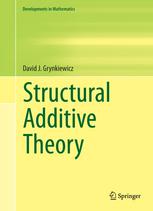

Most ebook files are in PDF format, so you can easily read them using various software such as Foxit Reader or directly on the Google Chrome browser.
Some ebook files are released by publishers in other formats such as .awz, .mobi, .epub, .fb2, etc. You may need to install specific software to read these formats on mobile/PC, such as Calibre.
Please read the tutorial at this link: https://ebookbell.com/faq
We offer FREE conversion to the popular formats you request; however, this may take some time. Therefore, right after payment, please email us, and we will try to provide the service as quickly as possible.
For some exceptional file formats or broken links (if any), please refrain from opening any disputes. Instead, email us first, and we will try to assist within a maximum of 6 hours.
EbookBell Team

4.4
62 reviewsNestled between number theory, combinatorics, algebra and analysis lies a rapidly developing subject in mathematics variously known as additive combinatorics, additive number theory, additive group theory, and combinatorial number theory. Its main objects of study are not abelian groups themselves, but rather the additive structure of subsets and subsequences of an abelian group, i.e., sumsets and subsequence sums. This text is a hybrid of a research monograph and an introductory graduate textbook. With few exceptions, all results presented are self-contained, written in great detail, and only reliant upon material covered in an advanced undergraduate curriculum supplemented with some additional Algebra, rendering this book usable as an entry-level text. However, it will perhaps be of even more interest to researchers already in the field.
The majority of material is not found in book form and includes many new results as well. Even classical results, when included, are given in greater generality or using new proof variations. The text has a particular focus on results of a more exact and precise nature, results with strong hypotheses and yet stronger conclusions, and on fundamental aspects of the theory. Also included are intricate results often neglected in other texts owing to their complexity. Highlights include an extensive treatment of Freiman Homomorphisms and the Universal Ambient Group of sumsets A+B, an entire chapter devoted to Hamidoune’s Isoperimetric Method, a novel generalization allowing infinite summands in finite sumset questions, weighted zero-sum problems treated in the general context of viewing homomorphisms as weights, and simplified proofs of the Kemperman Structure Theorem and the Partition Theorem for setpartitions.